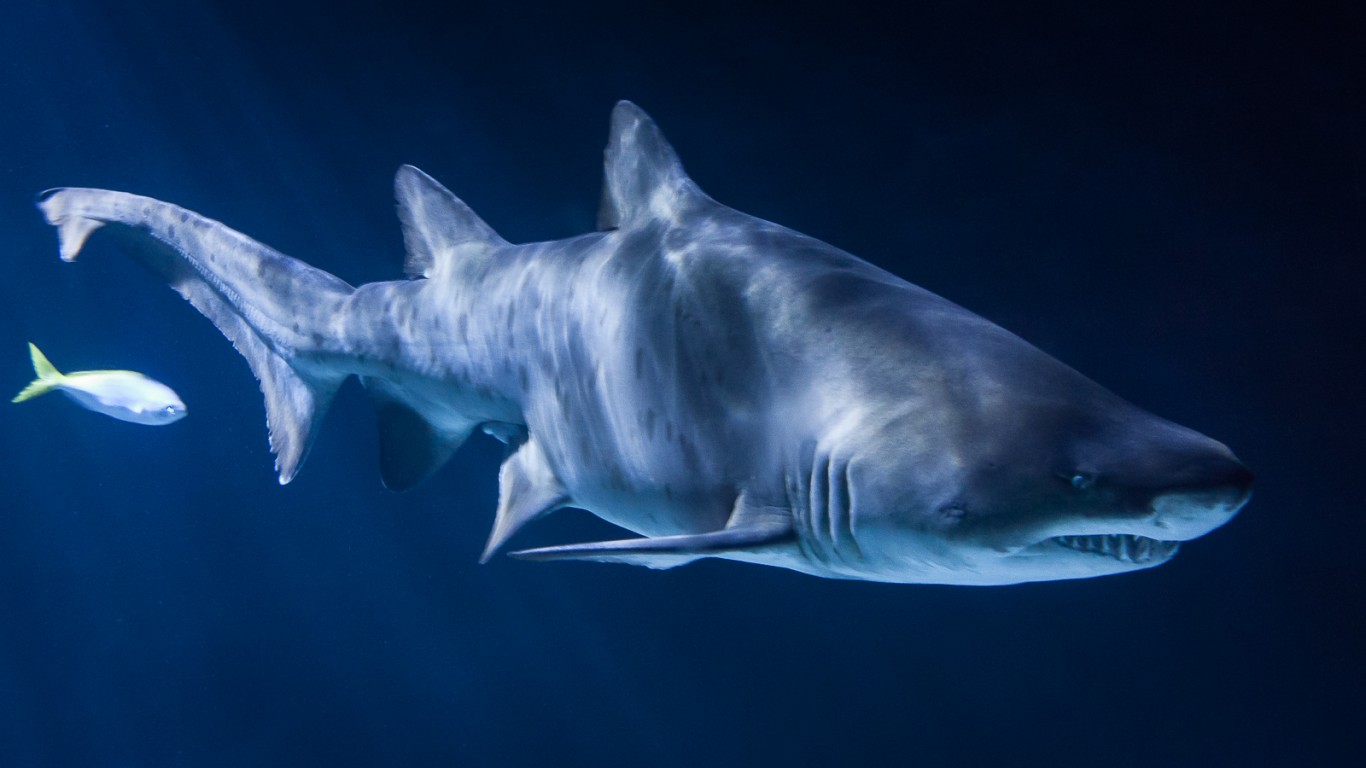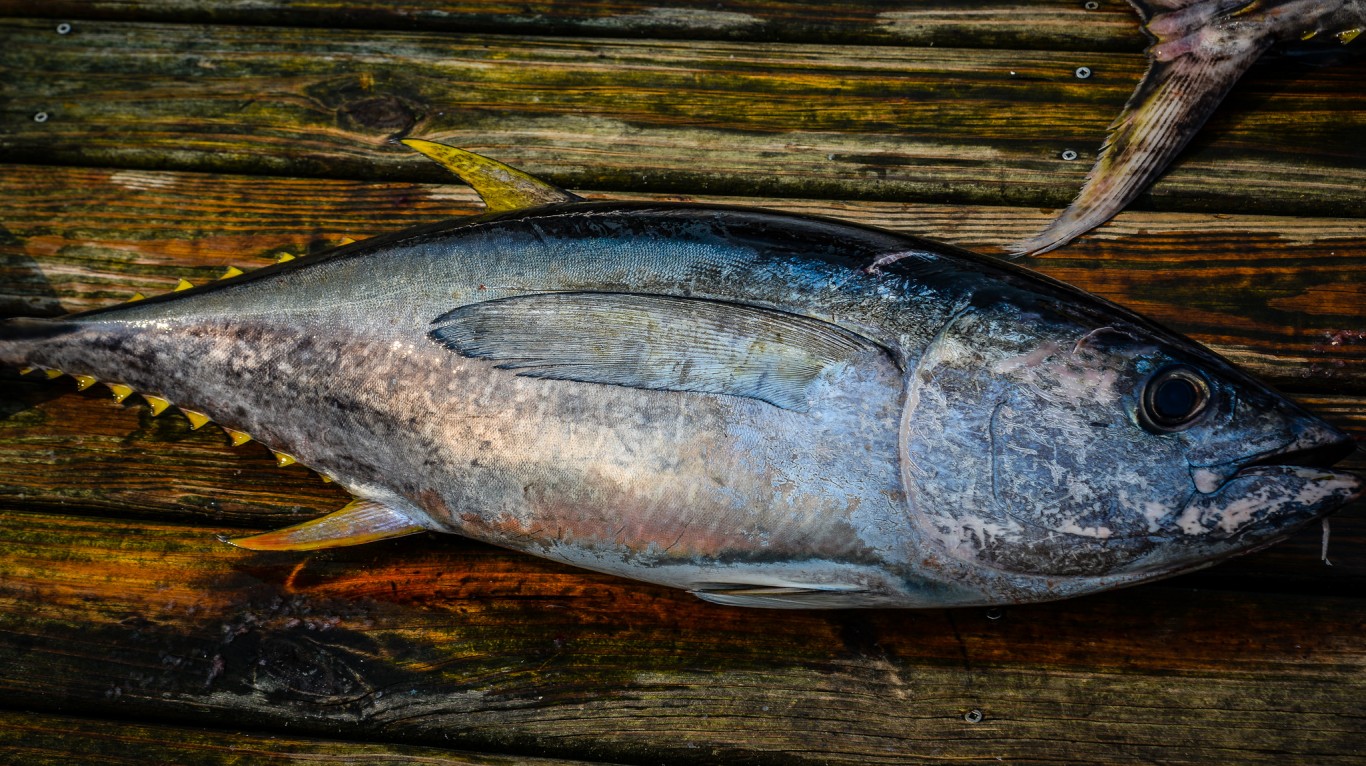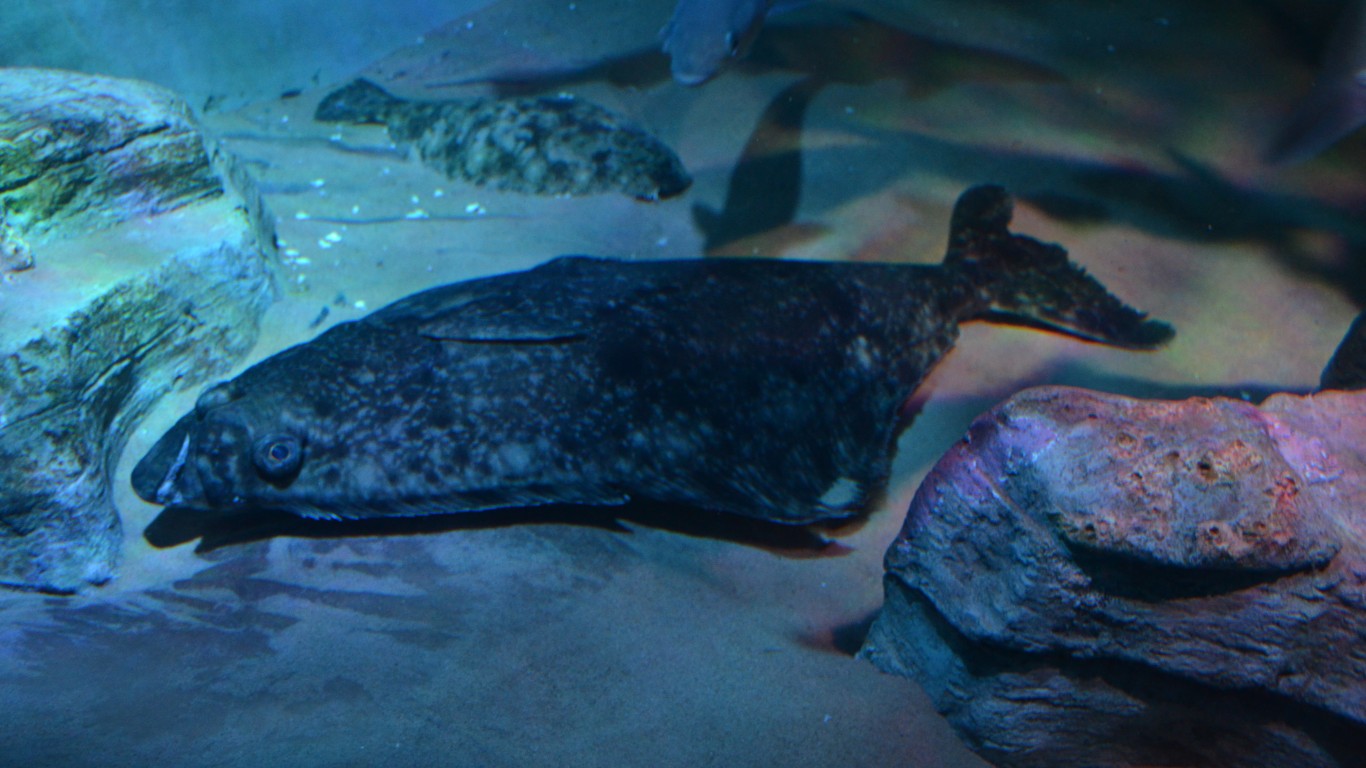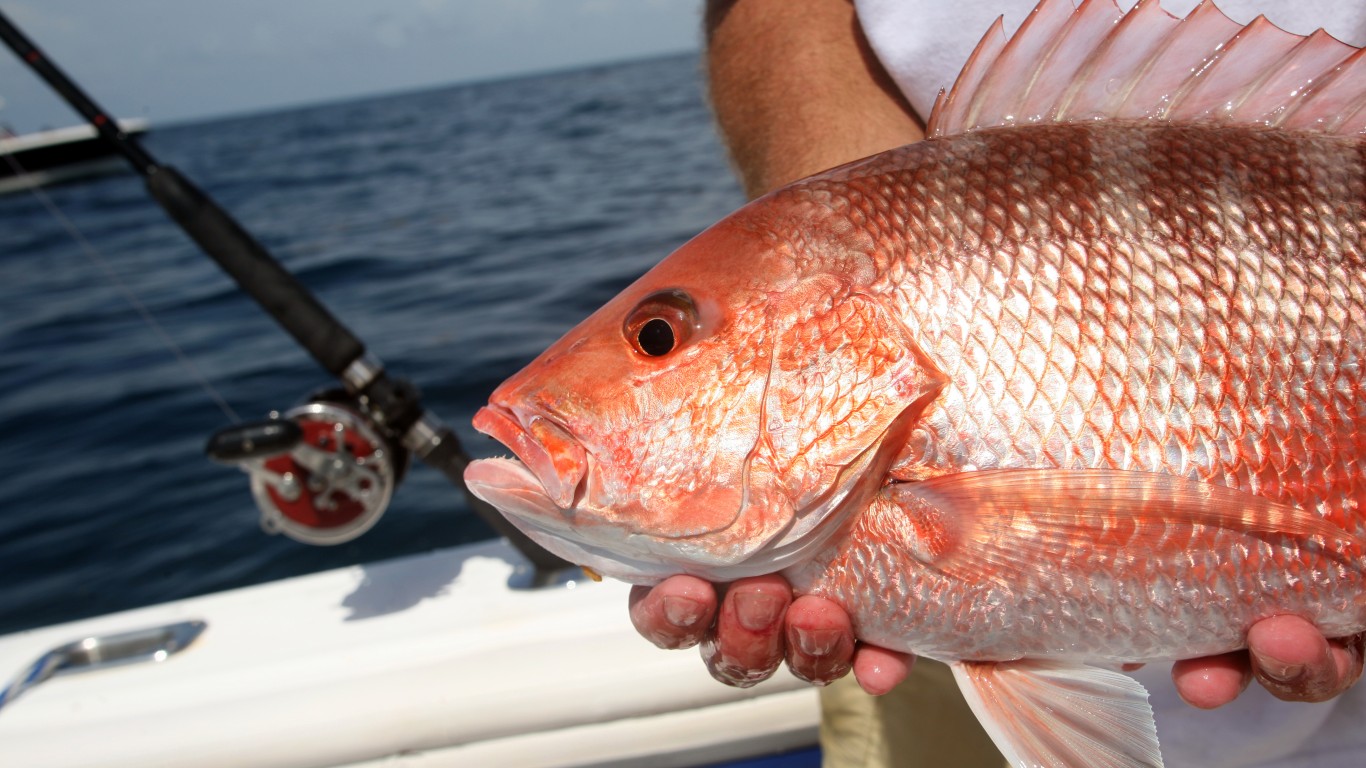
Fish can be one of the healthiest foods there is. It’s low in harmful fats (counterintuitively fatty fish are considered a “lean” source of protein) and often high in nutrients, including beneficial Omega-3 fatty acids, which contribute to brain and heart health. (Eating fatty fish is one of the healthy eating habits that will change your life.)
Not all fish is good for you, however. Many varieties — especially the larger ones with longer lifespans — contain various contaminants, most often significant amounts of mercury. This highly toxic metal can have a serious neurological impact, particularly in children and on fetuses, and increases the risk of high blood pressure and heart attack. (While species with particularly high mercury levels are best to avoid entirely, others are fine to eat occasionally — typically no more than once a week.)
Health issues aside, there are also environmental and ethical reasons to avoid eating some fish. Many species are overfished, sometimes illegally, some to the point where they are threatened with extinction.
Bycatch is another issue. The term refers to species of fish or shellfish — or other marine creatures, like sea turtles and seabirds — inadvertently taken along with the target species. Desirable bycatch is often retained and sold, but many species (and non-edible bycatch) are simply discarded, meaning returned to the sea, where they likely die.
Farmed fish can cause environmental problems, too, as they can escape into the surrounding environment where they interbreed with or compete for food with wild species. The antibiotics and other chemicals often used to raise them can leak into surrounding seas, too. (Another factor polluting the oceans is plastic waste. These 50 investors are bankrolling the plastic waste crisis.)
To determine which varieties of fish and shellfish are best to avoid (or at least to eat sparingly) — for reasons of health or environmental impact, or both — 24/7 Tempo reviewed recommendations and warnings from numerous environmental and medical websites, including the Monterey Bay Aquarium’s Seafood Watch, Greenpeace, Sustainable Fisheries, the FDA, the National Oceanic and Atmospheric Administration’s Fisheries site, WebMD, One Medical, Healthline, and Medical News Today.
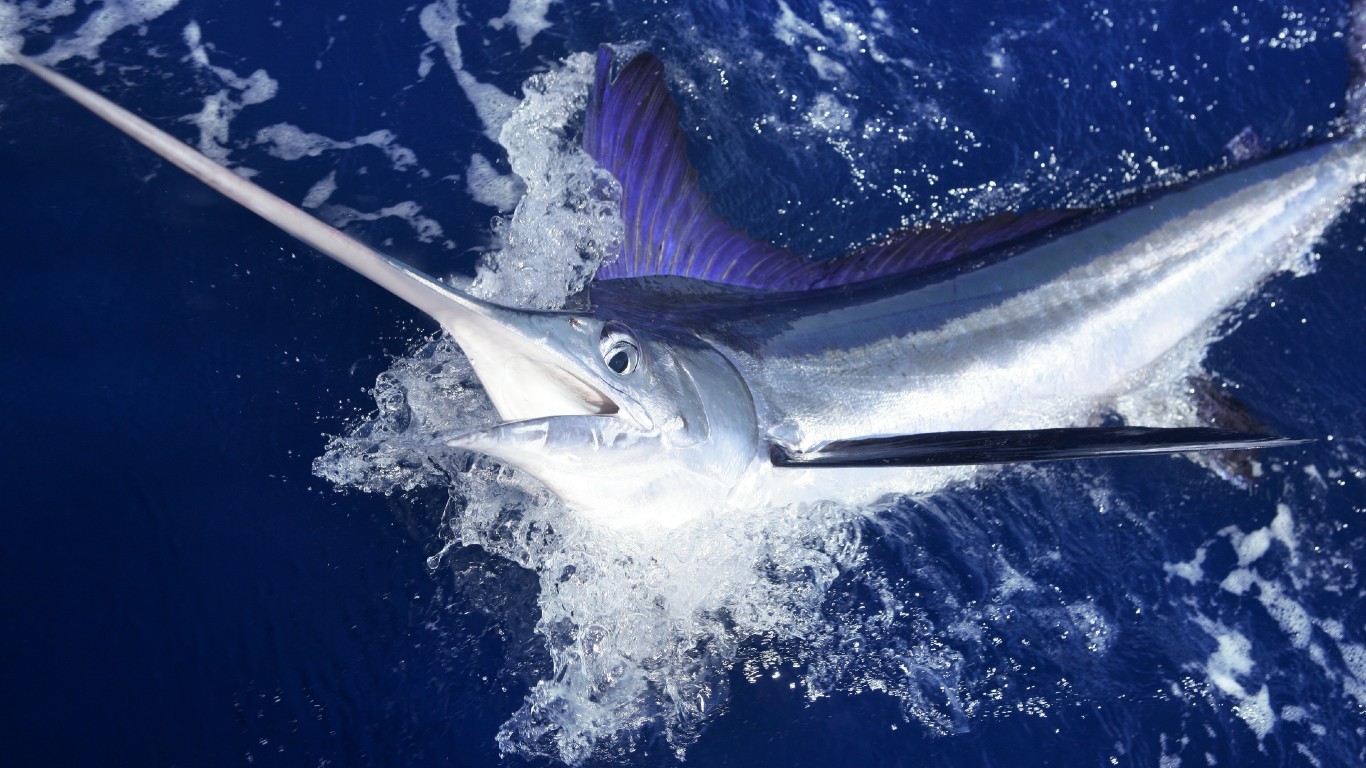
1. Swordfish
> Reason to avoid: High in mercury and parasites
> Farmed or wild-caught: Wild-caught
While only imported longline-caught swordfish is considered unsustainable, in general the fish should be avoided because of its potentially high mercury levels and the possible presence of nematodes or other parasites — though its high levels of nutrients are thought to justify an occasional meal.
[in-text-ad]
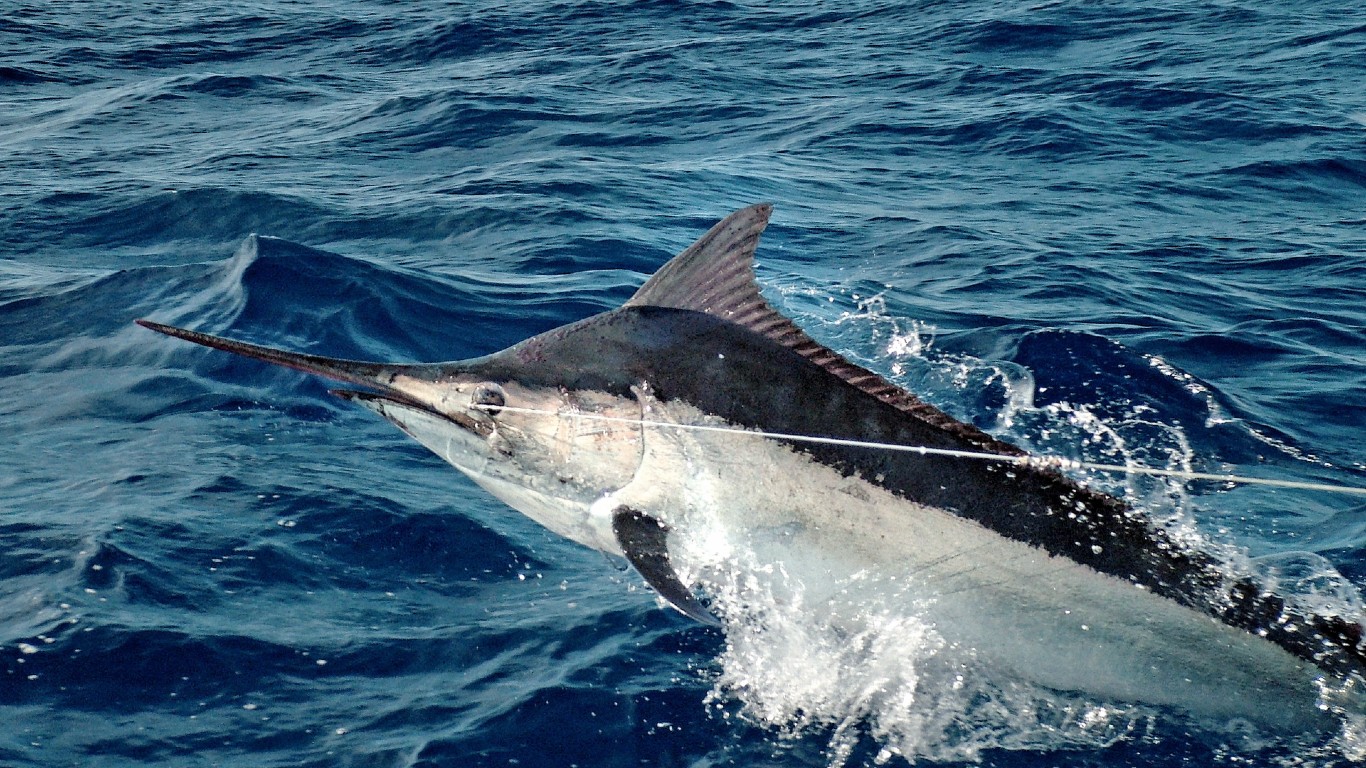
2. Marlin
> Reason to avoid: High in mercury, depleted populations, risks to other species
> Farmed or wild-caught: Wild-caught
Marlin can have higher levels of mercury than swordfish. In addition, the fisheries for many types of the fish are considered poorly managed, and sea turtles, sharks, and seabirds may be taken as bycatch.
3. Shark
> Reason to avoid: High in mercury, depleted populations, risks to other species
> Farmed or wild-caught: Wild-caught
Many species of shark have sky-high mercury levels, and shark meat has meager nutritional value, so there’s little reason to eat it. Declining populations are also a problem because of the shark’s essential role in the food chain. Seafood Watch makes an exception for the shark also called spiny dogfish when it’s fished in the United States.

4. Tilefish
> Reason to avoid: High in mercury
> Farmed or wild-caught: Wild-caught
Tilefish could be the unhealthiest fish of all, with extremely high levels of mercury wherever it’s harvested around the world. Those levels are double in tilefish from the Gulf of Mexico. Some tilefish is also taken by unsustainable fishing methods.
[in-text-ad-2]
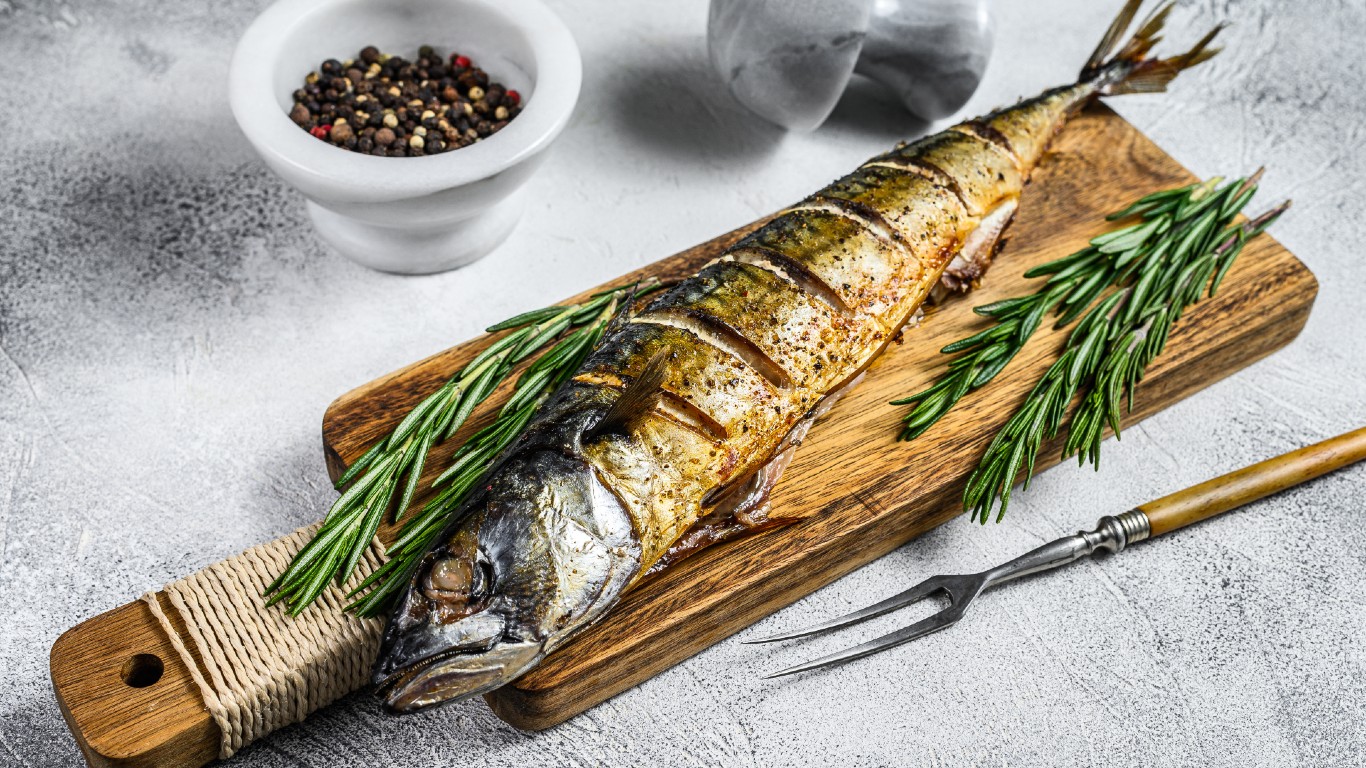
5. King Mackerel
> Reason to avoid: High in mercury
> Farmed or wild-caught: Wild-caught
Unlike its smaller, healthier cousins in the mackerel family, the king mackerel — also known as Spanish mackerel — is large enough to guarantee that it will contain a higher level of mercury.
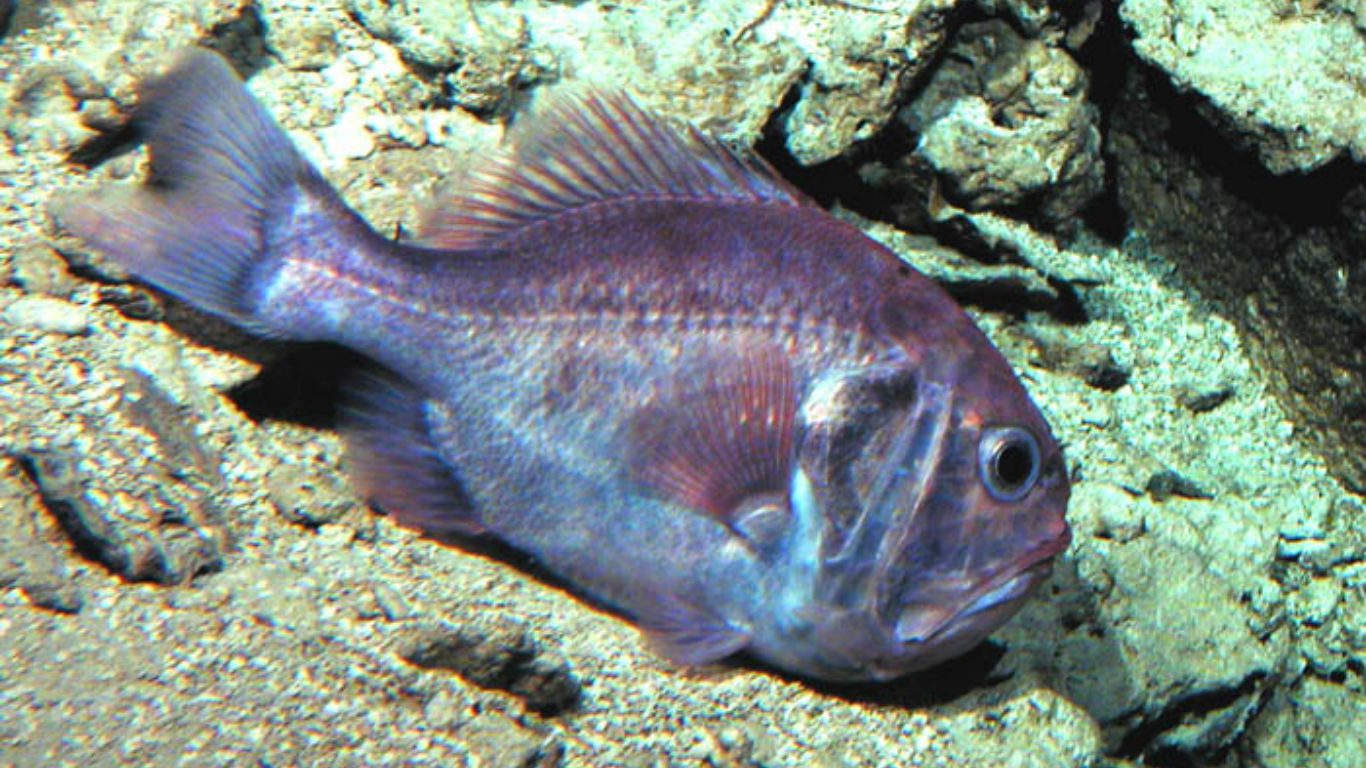
6. Orange Roughy
> Reason to avoid: High in mercury, depleted populations
> Farmed or wild-caught: Wild-caught
The first thing you should know about this fish is that an alternative name for it is slimehead. According to Greenpeace, “Many orange roughy stocks have already crashed…and recently discovered stocks are decreasing rapidly. In addition, it is slow-growing — it can live to be 100 years old — so it has a lot of time for the bioaccumulation of mercury.
[in-text-ad]
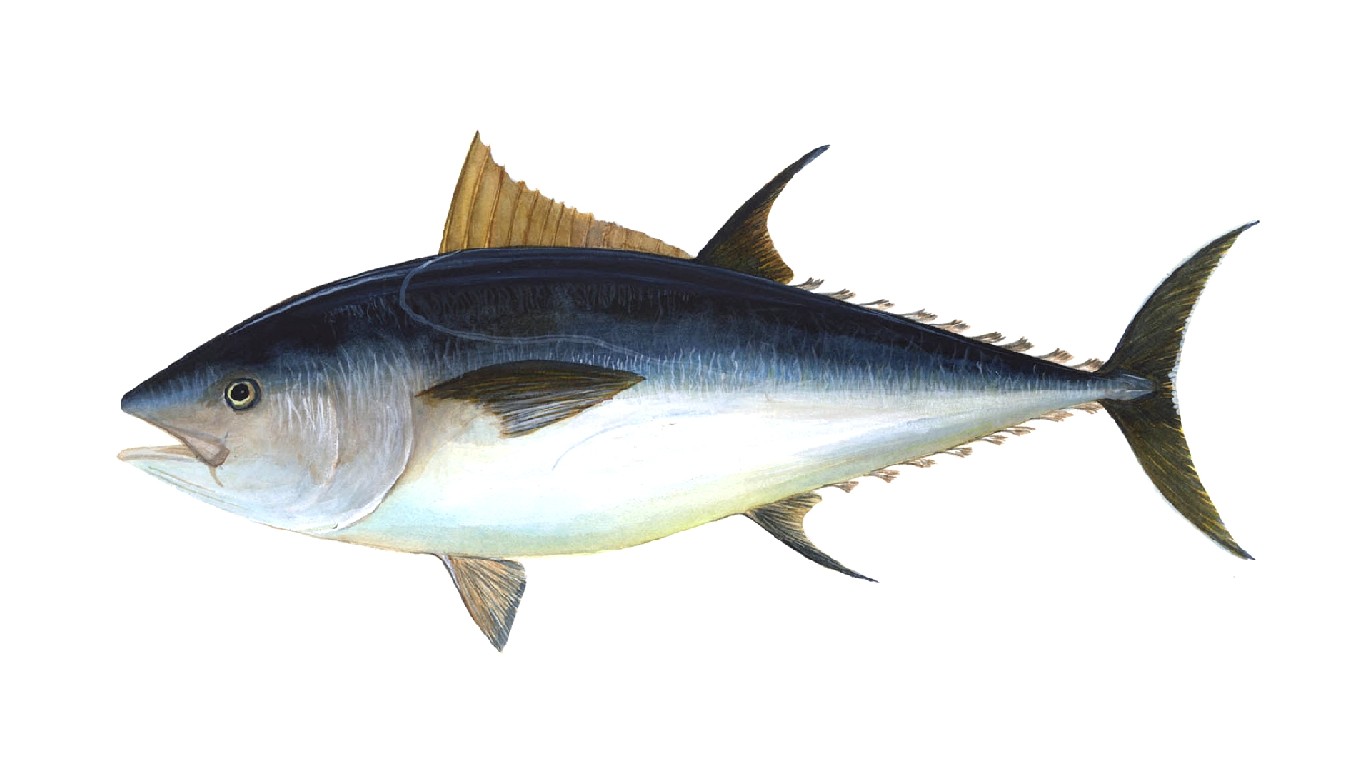
7. Bluefin Tuna
> Reason to avoid: High in mercury and PCBs, severely depleted populations, risks to other species, illegal fishing
> Farmed or wild-caught: Wild-caught
Highly valued as a delicacy — the owner of a Japanese sushi chain paid $3.1 million for a 613-pound specimen earlier this year — bluefin tuna is one of the most endangered major marine species. Populations of all three varieties — Atlantic, Pacific, and Southern — have declined precipitously in the past few decades. As a food item they are to be avoided for their high levels of toxins.
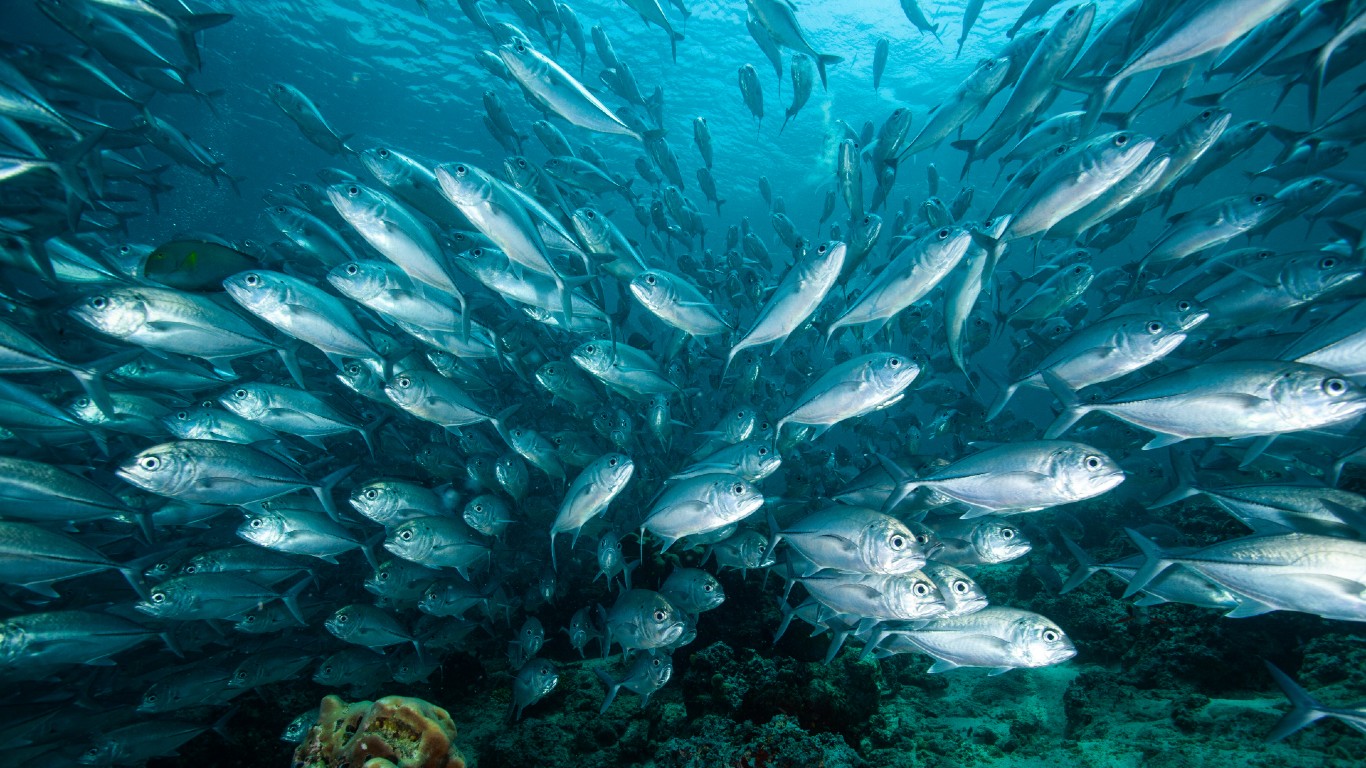
8. Bigeye Tuna
> Reason to avoid: High in mercury, destructive fishing methods, illegal fishing
> Farmed or wild-caught: Wild-caught
Bigeye is one of two species of tuna called ahi, and like other tuna is high in mercury. Conservationists urge that consumers choose tuna other than bigeye because of its diminishing numbers due to unsustainable fishing practices, including so-called IUU (illegal, unregulated, and unreported) harvesting by pirate longliners.
9. Yellowfin Tuna
> Reason to avoid: High in mercury, destructive fishing methods, illegal fishing
> Farmed or wild-caught: Wild-caught
Like all tuna, yellowfin — the other species marketed as ahi — is extremely nutritious, but like other large fish, it is contaminated by mercury. Compared with other tuna species, it has about the same amount of mercury as albacore, twice the amount of skipjack, and half as much as bigeye. Yellowfin is overfished, and sea turtles, sharks, and seabirds are often taken as bycatch.
[in-text-ad-2]

10. Tilapia from China
> Reason to avoid: Dosed with antibiotics, negative habitat impact
> Farmed or wild-caught: Farmed
Tilapia is generally a safe bet and a healthy, inexpensive choice, but origin is important. Avoid tilapia from China, where concerns include illegal use of antibiotics by farmers and widespread escape of the fish from flooded farming regions and subsequent impact on local wild species. Some health authorities warn against tilapia because of its high Omega-6 content, but the American Heart Association says that “Omega-6 fats are not only safe but they are also beneficial for the heart and circulation.”
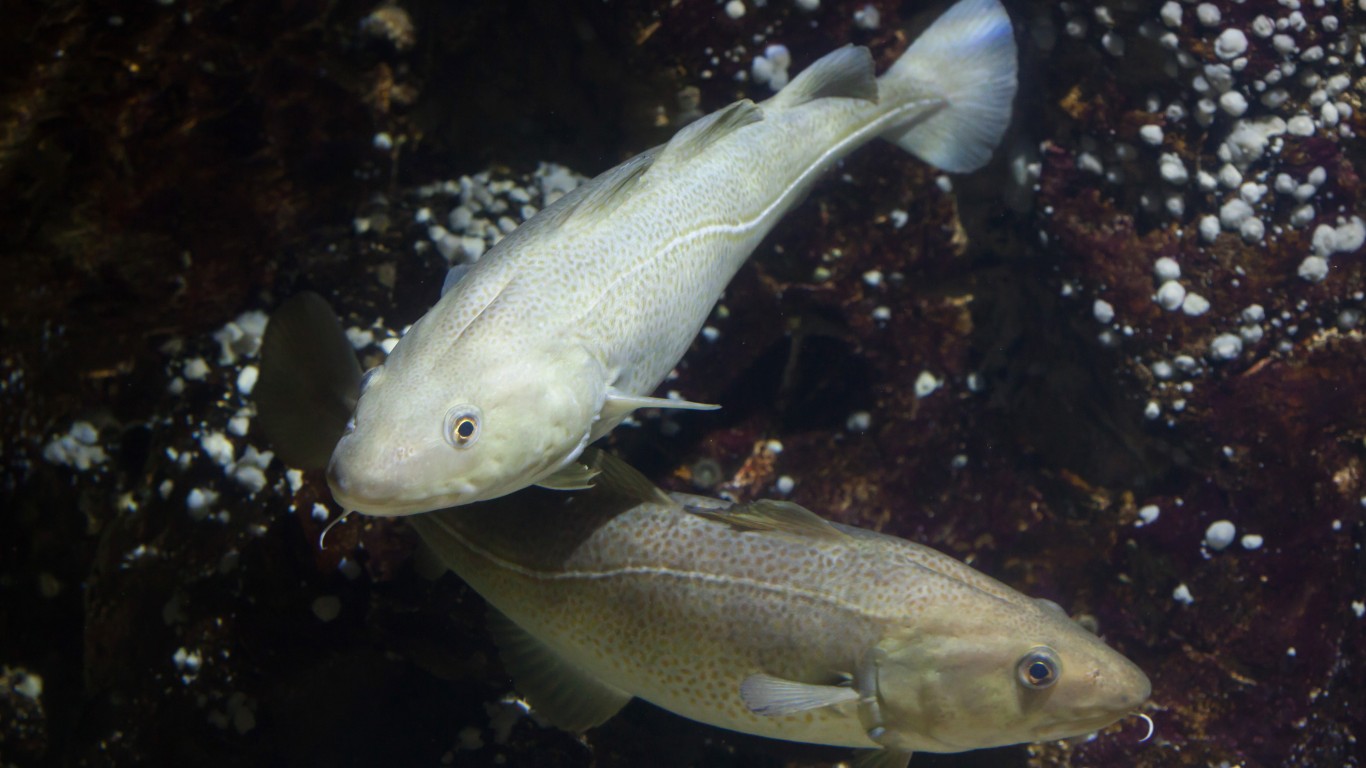
11. Atlantic Cod
> Reason to avoid: Vulnerable to extinction
> Farmed or wild-caught: Wild-caught
Atlantic cod fisheries collapsed in the 1990’s, and 2016 saw their lowest numbers in recent years. Two rebuilding programs for major fisheries are now in progress with a goal of stabilizing populations in this decade, but for now, Atlantic cod — also known as scrod — should be off the table.
[in-text-ad]
12. Atlantic Flatfish
> Reason to avoid: Potentially high in mercury, PCBs, and other contaminants; declining populations
> Farmed or wild-caught: Wild-caught
While Pacific populations of flatfish, such as flounder, sole, and halibut, are generally stable and healthy, their Atlantic cousins suffer from overfishing — though there are current initiatives to rebuild the stocks. The International Union for Conservation of Nature lists Atlantic halibut as endangered. Depending on where they’re fished, these species may also contain substantial quantities of mercury and/or PCBs.
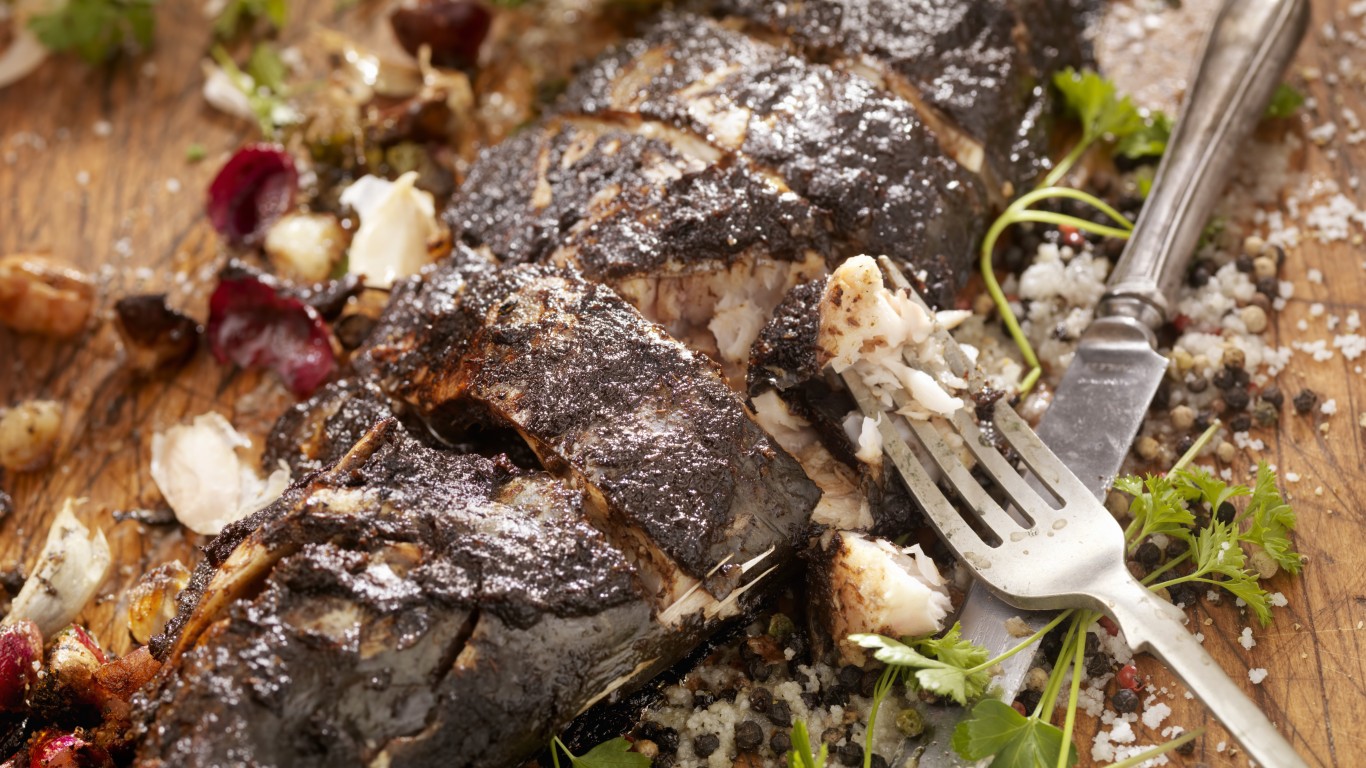
13. Chilean Sea Bass
> Reason to avoid: High in mercury, declining populations, illegal fishing, negative habitat impact
> Farmed or wild-caught: Wild-caught
It isn’t a true bass, it doesn’t always come from Chile, and its original name was Patagonian toothfish, but Chilean sea bass is one of the most popular of food fishes, prized for its delicious meat. Unfortunately, it’s high in mercury and vastly overfished, and its declining numbers potentially affect its marine environment negatively.
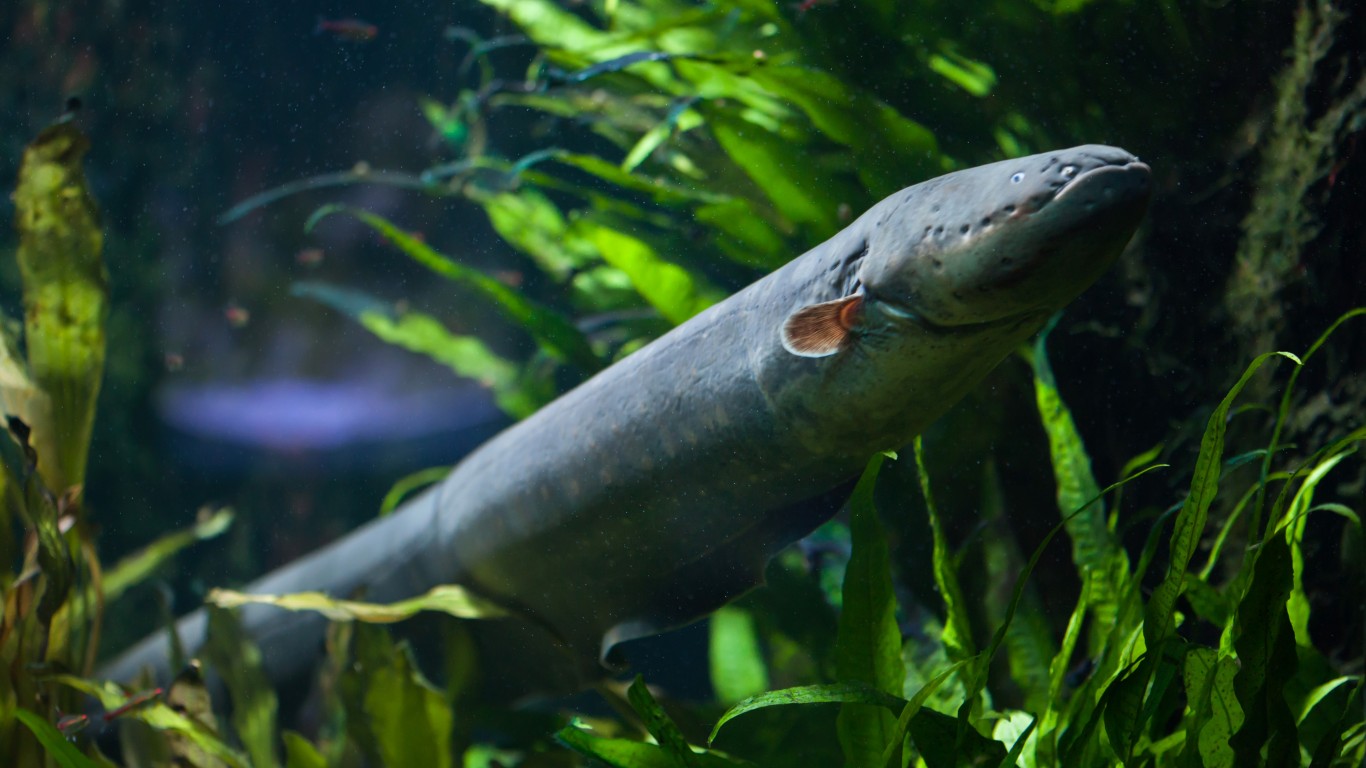
14. Eel
> Reason to avoid: Contaminants, negative habitat impact (farmed), declining populations (wild-caught)
> Farmed or wild-caught: Mostly farmed
With some exceptions, most eel — American, European, or Japanese — is raised under conditions that encourage the use of potentially harmful chemicals, and disease is common. In addition, effluents discharged from eel farms may harm native populations — and overfishing threatens wild eels.
[in-text-ad-2]
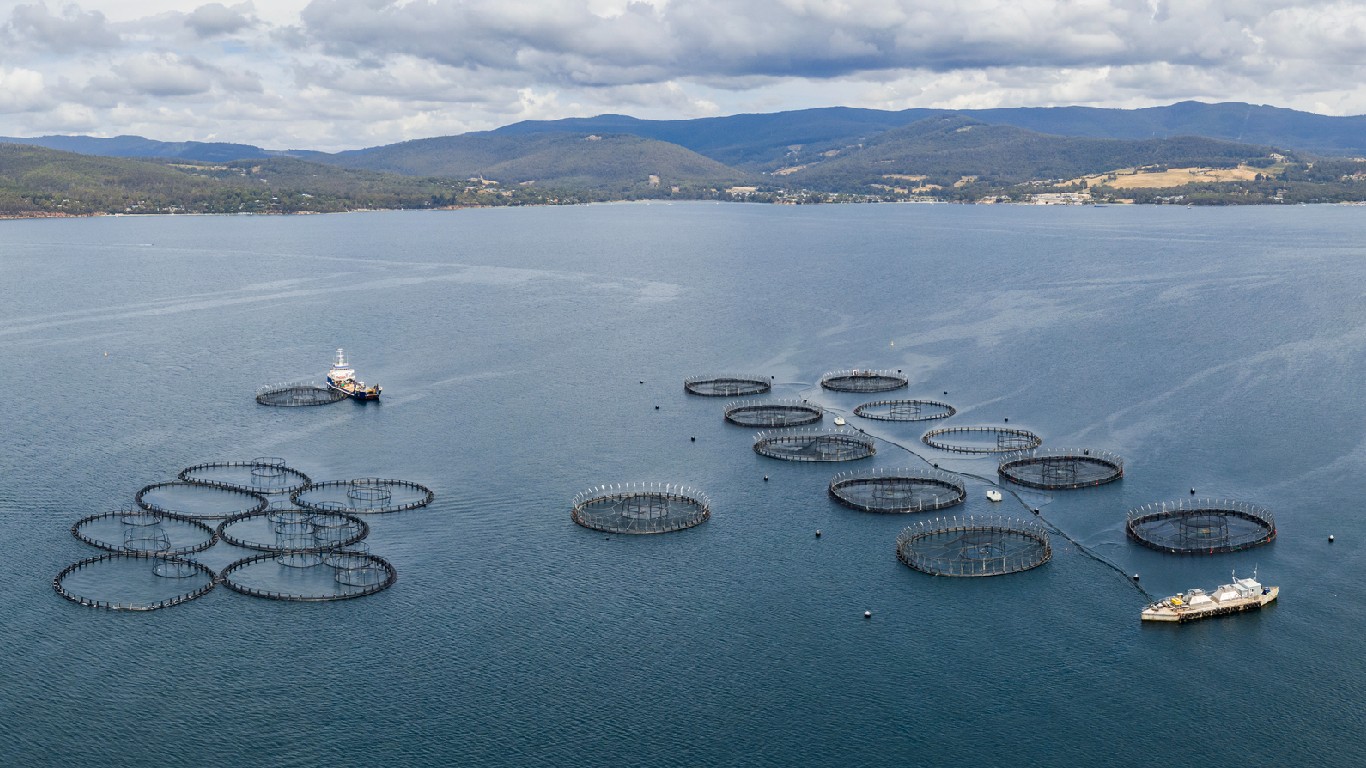
15. Farmed Salmon
> Reason to avoid: High in PCBs and other contaminants, negative habitat impact
> Farmed or wild-caught: Farmed
Often raised in crowded pens, these fish may be fed antibiotics to fend off disease and parasites. They also accumulate PCBs. Parasites and diseases from salmon pens can spread to nearby wild stocks. In addition, farmed salmon is typically fed on other fish, and it takes about three pounds of wild fish to produce one pound of farmed salmon.

16. Imported Basa/Swai/Tra/Striped Catfish
> Reason to avoid: High in Vibrio bacteria and other pollutants
> Farmed or wild-caught: Farmed
A type of Vietnamese catfish, swai is often pond-raised with hyper-intensive production methods that generate toxic substances.
[in-text-ad]
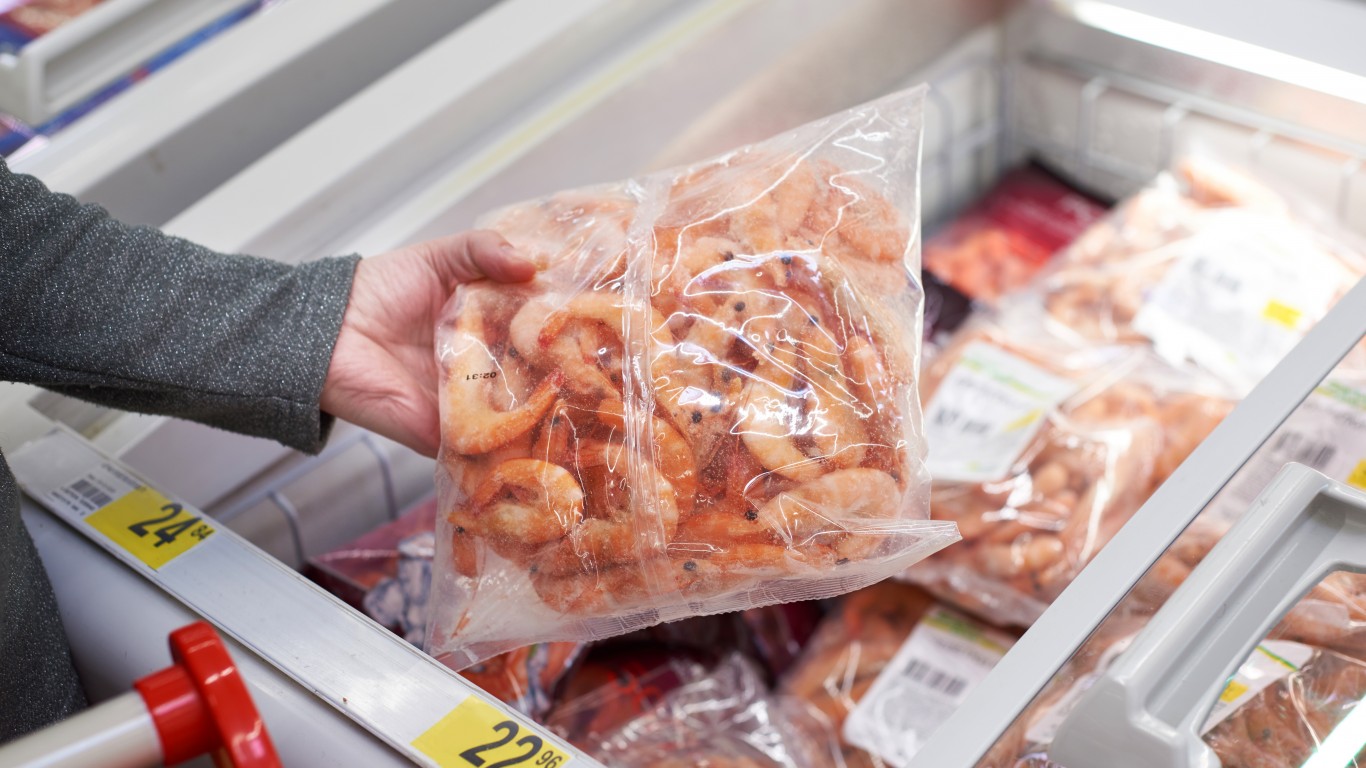
17. Imported Farmed Shrimp
> Reason to avoid: High in contaminants, negative habitat impact
> Farmed or wild-caught: Farmed
About 90% of the shrimp Americans eat is imported, and most imported shrimp comes from farms in Southeast Asia and Central America. Asian shrimp farms have in many cases replaced environmentally important mangroves. From a health perspective, much imported shrimp contain antibiotics that are not approved in the U.S., as well as 4-hexylresorcinol, considered hazardous by OSHA.
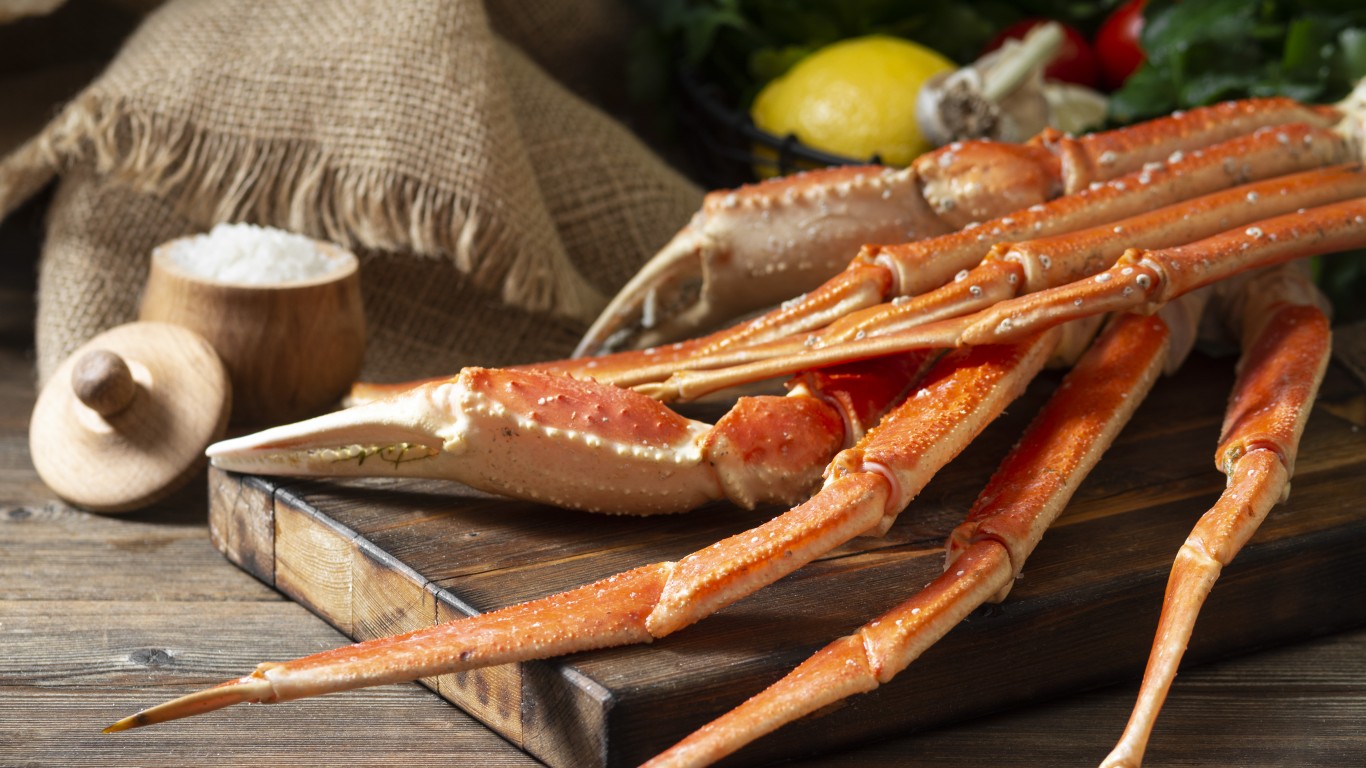
18. Imported King Crab
> Reason to avoid: Overfishing, negative habitat impact
> Farmed or wild-caught: Wild-caught
About half the king crab consumed in the U.S is from Russia’s Berent Sea. Russian fisheries are thought to be poorly managed from an environmental point of view, and, because the king crab is an invasive species in Russian waters, it is having a negative impact on the ecology.

19. Grouper
> Reason to avoid: High in mercury, declining populations
> Farmed or wild-caught: Wild-caught
There are more than 85 grouper species worldwide. Slow to reproduce, most are threatened by overfishing. (U.S. grouper fisheries typically set catch limits that are higher than those recommended.) They have also been subject to consumption warnings because of their mercury levels.
[in-text-ad-2]

20. Monkfish
> Reason to avoid: Negative habitat impact
> Farmed or wild-caught: Wild-caught
Light in color and sometimes said to resemble lobster in flavor and texture, this popular fish is recovering from depletion, but the trawling and dredging methods used for the catch is destructive to marine habitat.

21. Red Snapper
> Reason to avoid: Declining populations, negative habitat impact
> Farmed or wild-caught: Wild-caught
Perhaps the Gulf of Mexico’s most famous fish, red snapper has been seriously overfished, and fishery managers allow a catch that’s 50% higher than recommended. In addition, bycatch — of sharks, groupers, porgies, and other species — accounts for a staggering 44% of the total taken.
Want to Retire Early? Start Here (Sponsor)
Want retirement to come a few years earlier than you’d planned? Or are you ready to retire now, but want an extra set of eyes on your finances?
Now you can speak with up to 3 financial experts in your area for FREE. By simply clicking here you can begin to match with financial professionals who can help you build your plan to retire early. And the best part? The first conversation with them is free.
Click here to match with up to 3 financial pros who would be excited to help you make financial decisions.
Have questions about retirement or personal finance? Email us at [email protected]!
By emailing your questions to 24/7 Wall St., you agree to have them published anonymously on a673b.bigscoots-temp.com.
By submitting your story, you understand and agree that we may use your story, or versions of it, in all media and platforms, including via third parties.
Thank you for reading! Have some feedback for us?
Contact the 24/7 Wall St. editorial team.
